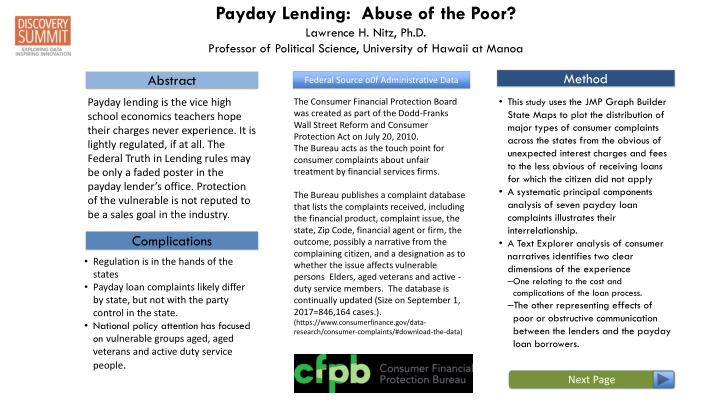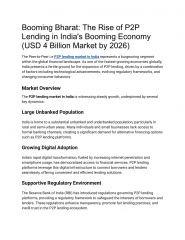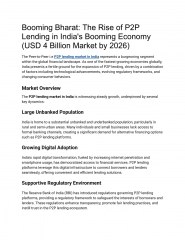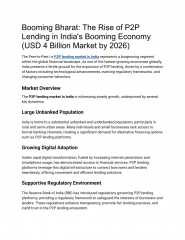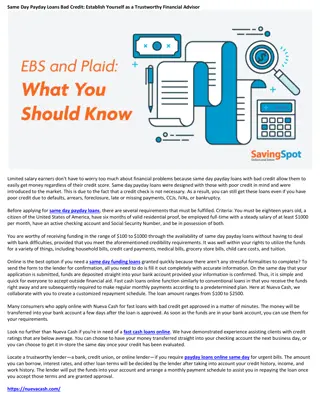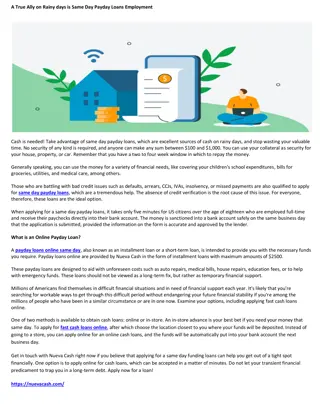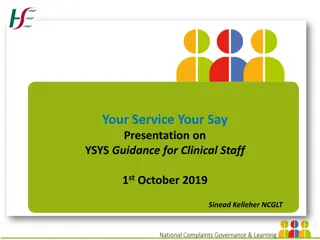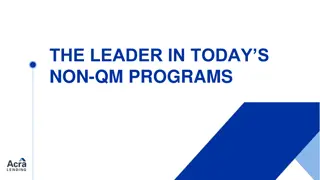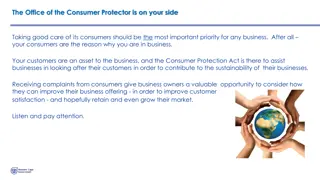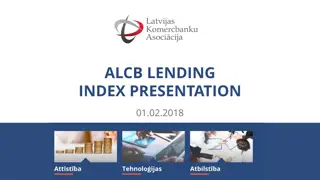Payday Lending Complaints Distribution Analysis
This study examines the distribution of consumer complaints related to payday lending, highlighting the impact on vulnerable populations. It explores the issues faced by borrowers, the regulatory landscape, and the role of state-level policies in addressing abuses in the payday lending industry.
Download Presentation

Please find below an Image/Link to download the presentation.
The content on the website is provided AS IS for your information and personal use only. It may not be sold, licensed, or shared on other websites without obtaining consent from the author.If you encounter any issues during the download, it is possible that the publisher has removed the file from their server.
You are allowed to download the files provided on this website for personal or commercial use, subject to the condition that they are used lawfully. All files are the property of their respective owners.
The content on the website is provided AS IS for your information and personal use only. It may not be sold, licensed, or shared on other websites without obtaining consent from the author.
E N D
Presentation Transcript
Payday Lending: Abuse of the Poor? Lawrence H. Nitz, Ph.D. Professor of Political Science, University of Hawaii at Manoa Method Abstract Federal Source o0f Administrative Data This study uses the JMP Graph Builder State Maps to plot the distribution of major types of consumer complaints across the states from the obvious of unexpected interest charges and fees to the less obvious of receiving loans for which the citizen did not apply A systematic principal components analysis of seven payday loan complaints illustrates their interrelationship. A Text Explorer analysis of consumer narratives identifies two clear dimensions of the experience One relating to the cost and complications of the loan process. The other representing effects of poor or obstructive communication between the lenders and the payday loan borrowers. Payday lending is the vice high school economics teachers hope their charges never experience. It is lightly regulated, if at all. The Federal Truth in Lending rules may be only a faded poster in the payday lender s office. Protection of the vulnerable is not reputed to be a sales goal in the industry. The Consumer Financial Protection Board was created as part of the Dodd-Franks Wall Street Reform and Consumer Protection Act on July 20, 2010. The Bureau acts as the touch point for consumer complaints about unfair treatment by financial services firms. The Bureau publishes a complaint database that lists the complaints received, including the financial product, complaint issue, the state, Zip Code, financial agent or firm, the outcome, possibly a narrative from the complaining citizen, and a designation as to whether the issue affects vulnerable persons Elders, aged veterans and active - duty service members. The database is continually updated (Size on September 1, 2017=846,164 cases.). (https://www.consumerfinance.gov/data- research/consumer-complaints/#download-the-data) Complications Regulation is in the hands of the states Payday loan complaints likely differ by state, but not with the party control in the state. National policy attention has focused on vulnerable groups aged, aged veterans and active duty service people. Next Page
Background and Incidence of Payday Lending Complaints Distribution of Payday Lending Complaints by Zip Code Controlling for State Characteristics: The distribution by Zip Code raises the question of the level of intensity of each of the types of complaints. While payment of unexpected fees and interest was the most commonly mentioned issue, the relative level of the remaining issues is quite low. A MANOVA (not shown) on the issue frequency as a function of the average income and number of households in the Zip Code yielded few significant differences. Information at the level of the residential Zip Code, in addition, may be quite far removed from the individual, and is generally not linked to an administrative or social unit of the community, Why is there no major population or income effect by Zip Code? Payday lenders are regulated at the state level, uniformly for the whole state. There may be effects at the Zip Code level, where the area is in a state that bans payday lending, but near the border of a state that permits it. (Melzer, 2011) Political structures such as the Governorship live at the state level. Cultural entities: political ideology, community engagement, may flourish at all levels, but are collected reliably at the state level (Putnam, 1995), (Tausanovitch and Warshaw, 2013), (Wright, et.al., 2001). The Pew Center reports Pay Day Lender regulation strategies by state (Pew, 2015). The Zip Code Tabulation Area (ZCTA) may not describe the shopping area for payday loans. If this is the case, then norming with ZCTA to control for population may also use the wrong base. Concentration of Complaints by State: Examples https://www.consumerfinance.gov/data-research/consumer- complaints/#download-the-data referenced 5-15-2017 The tenor of complaints varies across the country. Clearly receiving loans not requested and paying unexpected interest and fees are critical issues to many folks. Inability to contact the lender also appears frequently.
Digressions and Extensions Illustrating Importance of Variables in the Model The JMP Generalized Linear Model for Poisson regression provides an effect summary expressed in log worth to provide visual assessment of the efficiency of each of the variables contribution to the explanatory power of the model. For all of these models, the housing count is the 1argest, as it is our population control. The most interesting features may be the least expected, as suggested by paging through the pie charts below.. Generalized Poisson Analysis of Individual Complaint Issues Direction of Effect on Complaint Issue and Significance of Effects Issues Term Applied for a loan bud did not receive the money Charged bank account wrong day oramount Charged fees and interest I did not expect Cannot stop charges to bank account + p<0.0001 '+ p<0.0001 '+ p<0.0001 '+ p<0.0001 '+ p<0.0001 '+ p<0.0001 '+ p<0.0001 + p<0.002 - p<0.0001 + p<0.05 + p<0.007 + p<0.0001 + p<0.0005 + p< 0,005 - p<0.0001 - p <.0001 - p<0.0001 - p,0.0001 - p<0.0001 + p<0.001 - p<0.05 Received a loan I did not apply for Payment to account not credited Cannot contact lender Sum(Houshold Count in Complainant Zip Codes# Mean(Mean State Income in Complainant Zip Codes) Republican_Governor Pew_Permissiveness[Limited Regulation] Pew_Permissiveness[Permissive]* Bowling Alone Social Capital Index Traufanovitch Estimate of Political Liberalism Restart Animation Restart Animation + p<0.002 - p<0.0001 - p<0.0001 - p<0.04 * ?The base category for the Pew Index is "Restrictive." # Housenold count is the population control variable and is always highly significant. The State Effects Before we move on to the more pithy content the consumer s complaint text, we should look at a critical design issue in building the CFPB data set a variable to identify important target groups: elder citizens, elder veterans, and active duty military personnel. Thinking Through these Results The complaint issues, while interesting, are only seldom driven by political party institutional arrangements, such as the party of the Governor. Broad measures of the ideological position of the electorate do not, as might be expected, predict the level or tenor of complaints. One drawback may be that these measures are much older than the contemporaneous CFPB complaint record. It was frankly surprising that an abstract indicator of social capital drives down a whole range of complaints about payday lending. On a bit of thought, in those communities where people are engaged with neighbors, bowling leagues, social clubs, school organizations folks have a chance to get insight into prospective bad ideas. There is little evidence that very low income areas drive the Payday Lending complaints. Payday borrowers must have bank accounts thus are not the poorest Americans. The presence of a Republican Governor is associated only with a mild decrease number of Can t contact the lender complaints. The Bowling Alone Social Capital Index is associated with lowering all the following: unwanted charges, inability to contact lender, unexpected fees, uncredited payments, failure to get loan, and received an unwanted loan. The Pew Permissiveness Index is associated with more unwanted charges to bank accounts and charges against the wrong account. The Traufanovitch Index is associated mildly only with a reduction in the inability to contact the lender and applying for a loan but not receiving it. The three target populations differ dramatically in one critical issue, the degree to which they had not anticipated fees and interest charges. While 43% of non-elder clients said they paid interest they did not expect, fully 57% of elder clients paid unexpected interest and fees.. Active duty military reported unexpected fees in 49% of the complaints filed. The unexpected burden of high fees, interest, and instigation of new loans have been identified by the Department of Defense as entre into a behavior mode that may threaten the readiness of a combat unit. (Carrell and Zinman, 2014) The significance level and direction of effects of the predictors are summarized in the following table.
Looking at the Payday Loan Relationships More Figuratively Some of the plausible predictors of Pay Day Loan practices do not lead to a persuasive model. Yet we know that there are state differences, there are small differences in some of the issue complaints by the political party of the Governor, and there are a couple of instances in which well developed measures predict higher numbers of issue complaints. If we treat all of the complaint issues together, we should be able to plot the space into which their relationships may be projected. The following example plots the first two principal components of the correlation matrix among the issues. The figure on the right illustrates row percent of the issues plotted against the first two principal components. The figure on the left plots the location of each state on the same underlying dimensions. In this analysis there were actually six plausible underlying predictor variables. We can examine the most salient using the JMP plot of partial contribution of variables to the principle component analysis. The following graph illustrates the importance of each variable (issue) in defining the underlying factor structure. There are some patterns here we had not seen in the regression analysis: The Federated States of Micronesia appear to be uniquely disadvantaged in receiving account credit. South Dakota may be a magnet for receiving loans for which the citizen did not apply. The left-hand side of the figure appears characterized by inability to contact the lender and applying for a loan without receiving money. Inability to stop charges to bank account characterizes Pay Day Loans in Hawaii to some extent. Three clear patterns emerge: Charged unexpected fees Charged wrong account, Account not credited, Received unwanted loan Can t contact lender, Received unwanted loan.
And What the Borrowers SaidSays It All! JMP Text Mining offers the capacity to prune and parse the words in documents and organize words into topics, themes and clusters. The computation process constructs a singular value decomposition of the term and phrase lists for a set of documents. As in a factor analysis the singular vectors allow plotting of words in a Cartesian graph. A more interesting plot is that of the documents along the same vectors. In this illustration, we present a plot of the locations of the documents across the first and second vector, and then illustrate some of the typical complaint texts submitted by the consumers. Dimension 1 is characterized on the positive end by terms like money, bank, loan, received, another; on the negative end by employment, sister, collection, jail Dimension 2 is characterized on the positive end by income, another, debt, wages, file; on the negative end by every two weeks, worse, exploit, licensed, The singular value plot of documents is shown below, with blowouts of selected extreme case narratives. I initially set up a " payday '' loan and the company converted it to a " flex line of credit '' loan. I used XXXX bank account to create the loan and have the funds deposited. I made some payments out of this account. I then wanted to change the financial institution and account that the payments came out of. I was unable to remove the initial account but I was able to add a new account. My payments have been coming out of the new account without any issues. I changed jobs and needed to change my due date to line up with my new paydays. I emailed the company to ask how to do that. They said to send in new paystubs to verify my new pay dates. I did that only to have them come back with a " form letter '' email telling me that I could not change my due dates even though this loan was set up with payments to be when I got paid. The VERY NEXT payment after I requested a due date change didn't deduct from my account like it always did. The next day after the due date I got a notice from my initial back that I set the loan up with stating that I had a payment that attempted to clear but there were no funds to clear the payment. I was charged a {$29.00} NSF Fee and my account was now in the negative. I looked to see what happened and this lender, who has been charging the " new '' account for MONTHS without incident, attempted to take my payment out of the " old '' account that I was no longer using. I called them immediately and advised them that they had no authorization to change my preferred payment account and that the only reason the old account was on there as because I couldn't remove it. I asked why they had been taking all my payments with no issue from the new account then suddenly attempted to withdrawal from an account that was not being used. I advised them that they created an NSF Fee and that I needed this issue resolved ASAP and the NSF Fee covered by them. I was placed on hold to have them come back and say that they " had a system update '' on their end and it defaulted back to my original account. I advised them that I was given no notice from them that they were having system upgrades and that I needed to verify my preferred account was correct. I advised them that I was not responsible for that account even being on there since I had no ability to remove the account. I was told that they would NOT be crediting me back the NSF Fee because I had that account on there system .. I never took a loan from XXXX and someone from ERC XXXX calls me numerous times a day. No debt validation letter was sent to me. They refuse to issue any address and accompanying documents. I have asked them to stop calling me but they persist. [443] A company called XXXX XXXX keeps calling " No Caller ID '' but once left a number of XXXX, the cuss at me and per the voicemail states " This XXXX is over '' and keep using false names such as a sheriff, a detective and the same lady keeps calling changing her name. The first time she used XXXX XXXX. She keeps stating she is picking up for warrants and I have no warrants. She states she will be at my house within the hour and they don't show. Her scare tactics are very uncomfortable that she is acting as a legal community servant. I am contacting a lawyer to try and stop the harassment. They have also called my job which I am not sure how they got the number and release information about this matter to coworkers about my financial debt. They have not mailed me anything or emailed me documentation but still call every other day harassing me as well as my mothers cell phone. [4483] I applied for a loan with Big Picture Loans for an amount of {$400.00} and was approved. In the Loan details it was stated there would be a {$140.00} Finance Charge and I agreed making the total amount {$540.00}. I was NOT informed of the whopping 974.0608 % Interest Rate that I would be charged and the Finance charge of {$1800.00} making the total amount to be paid $ {$2200.00}, There is absolutely no way I would have agree to this Loan if I had been told the truth upfront but I was not able to view the " Truth in Lending '' disclosure until after the loan had been processed and funds delivered to my account. This is illegal and I will be taking it further. [3901] I took out a small loan of {$300.00} from the company Green Trust Cash on XXXX XXXX 2016. When the loan was originally taken out I was in need of a small amount to cover my rent charges. I had every intention of paying off the loan in full with my next paycheck, but other circumstances came about and I was unable. I figured that I would be charged the fee amount and would see a significant reduction in my remaining loan balance. Since originally receiving the loan I have made payments of . {$710.00} debited from my account on a loan that was originally {$300.00}. Mind you that my principal balance has only dropped to {$280.00} due. The reason I haven t paid of the loan sooner is because of the high fees and other circumstances I have been forced to take out other payday loans to stay afloat which has landed me in a huge financial crisis. I am a resident of Minnesota and Minnesota 's laws state that a loan between {$250.00} & {$350.00} payday lenders can not charge more than 6 % annual interest ( minimum {$17.00} ) plus a {$5.00} fee. Green Trust Cash 's loan was an annual percentage of 667.41 % with total payments coming out to {$1600.00} on a {$300.00} loan. THAT IS RIDICULOUS! I contacted the company Green Trust Cash about their extremely high fees and not reducing my principal balance as well as asked them for a refund of {$210.00} ( the amount in fees already paid compared to Minnesota 's Payday Lending Laws ) because I paid this company {$710.00} on a {$300.00} loan. They promptly responded stating that they are a Tribal Lender based out of Montana and that they do not need to adhere to local State laws. They stated the following : " Clearly stated on our website and in the contract you executed it states Green Trust Cash, LLC ( the " Company '' ) is a wholly owned and operated entity of the XXXX XXXX XXXX XXXX ( the " Tribe '' ) on the XXXX XXXX XXXX XXXX Montana ( the " Reservation ). The Company is wholly owned by the Tribe, was established for the Tribe 's economic benefit, and is organized under and operates pursuant to Tribal law. As an economic arm of the tribe, the Company shares the Tribe 's sovereign immunity and, therefore, is not subject to state enforcement actions described in your XXXX mail. References: American Ideology Project. (n.d.). Retrieved September 4, 2017, from http://www.americanideologyproject.com/ Putnam, R. D. (1995). Bowling Alone: America s Declining Social Capital. Journal of Democracy, 6(1), 65 78. https://doi.org/10.1353/jod.1995.0002 Wright, G., McIver, J. P., & Erikson, R. S. (2001). Pooled CBS/NYT Party ID and Ideology Estimates, 1977-1999 [Data File]. Available at: http:/socsci. colorado. edu/ mciverj/jpm. html. December. Consumer Financial Protection Bureau. (n.d.). Retrieved February 6, 2017, from https://www.consumerfinance.gov/data-research/consumer-complaints/ Wright Jr, G. C., Erikson, R. S., & McIver, J. P. (1987). Public opinion and policy liberalism in the American states. American Journal of Political Science, 980 1001. Retrieved from http://www.jstor.org/stable/2111232 Melzer, B. T. (2011). The Real Costs of Credit Access: Evidence from the Payday Lending Market*. The Quarterly Journal of Economics, 126(1), 517 555. https://doi.org/10.1093/qje/qjq009 Carrell, S., & Zinman, J. (2014). In harm s way? Payday loan access and military personnel performance. The Review of Financial Studies, 27(9), 2805 2840. Officer, E. B. (n.d.-a). Payday Lending in America: How Borrowers Choose and Repay Payday Loans. Retrieved September 5, 2017, from http://bit.ly/1EGAqoS
